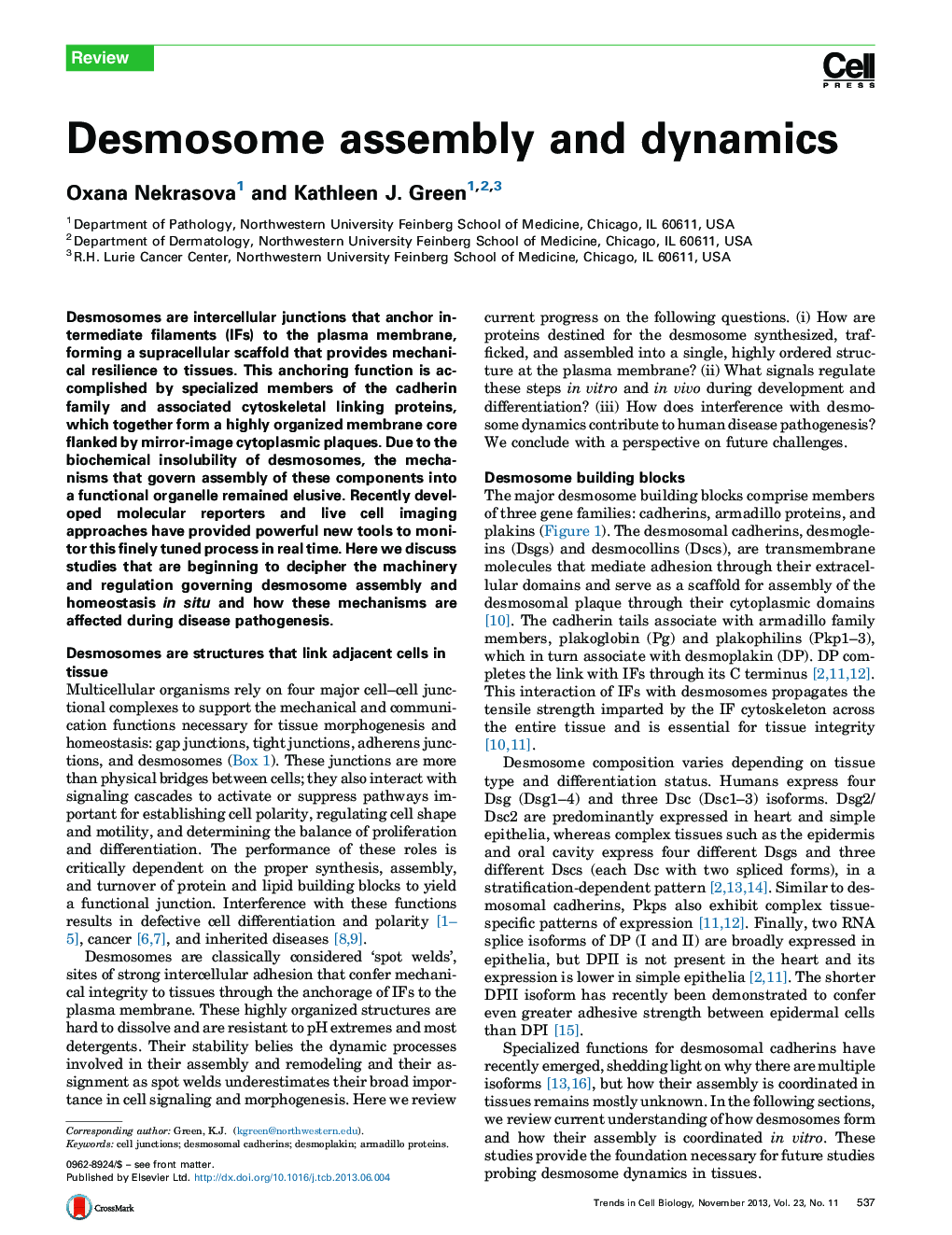| Article ID | Journal | Published Year | Pages | File Type |
|---|---|---|---|---|
| 2204512 | Trends in Cell Biology | 2013 | 10 Pages |
•We discuss the machinery responsible for desmosome membrane and cytoplasmic plaque assembly.•We report intracellular signaling pathways that regulate desmosome formation and turnover.•We propose how defects in desmosome assembly can contribute to human diseases.
Desmosomes are intercellular junctions that anchor intermediate filaments (IFs) to the plasma membrane, forming a supracellular scaffold that provides mechanical resilience to tissues. This anchoring function is accomplished by specialized members of the cadherin family and associated cytoskeletal linking proteins, which together form a highly organized membrane core flanked by mirror-image cytoplasmic plaques. Due to the biochemical insolubility of desmosomes, the mechanisms that govern assembly of these components into a functional organelle remained elusive. Recently developed molecular reporters and live cell imaging approaches have provided powerful new tools to monitor this finely tuned process in real time. Here we discuss studies that are beginning to decipher the machinery and regulation governing desmosome assembly and homeostasis in situ and how these mechanisms are affected during disease pathogenesis.
